Iodine is an essential micro-nutrient. This means every single cell of every single person needs it. Evolutionary biologists reckon that seafood consumption, and thus iodine absorption, played an important role in human brain development and evolution. Iodine also has excellent antibacterial, anticancer, antiparasitic, antifungal, and antiviral properties.
Unfortunately, iodine deficiency in the general population is of pandemic proportions in our modern world due to iodine's displacement in our bodies by environmental toxins such as bromide, pesticides, and food additives. Modern farming techniques have also led to deficiencies of iodine and other minerals in the soil. Thus, crops grown in iodine-deficient soil are deficient in iodine.
Certain diets and lifestyles can also predispose a person to develop iodine deficiency. Those who eat a lot of bakery products (breads, pasta, etc), which contain high amounts of bromide, are at risk. So are vegetarians and those who don't like sea food, sea vegetables or salt.
According to Dr. Brownstein, author of Iodine: Why You Need It, Why You Can't Live Without It, about one-third of the global populations live in a region of iodine deficiency. He and other iodine researchers have tested thousands of people, and found consistent results: approximately 96% of patients test low for iodine. The World Health Organization has recognized that iodine deficiency is the world's greatest single cause of preventable mental retardation. Iodine deficiency has been identified as a significant public health problem in 129 countries and up to 72% of the world's population is affected by an iodine deficiency disorder.
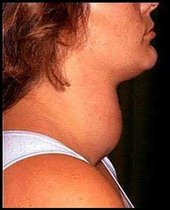
- breast cancer
- thyroid cancer
- ovarian cancer
- uterus cancer
- prostate cancer
- autoimmune thyroid illnesses
- hypothyroidism
- fibrocystic breast disease
- ADHD
- chronic fatigue
- fibromyalgia
- ADHD/ADD
- atherosclerosis
- breast diseases
- Dupuytren's conctracture
- excess mucous production
- fibrocystic breasts
- goiter
- hemorrhoids
- headaches and migraine headaches
- fibromyalgia
- chronic fatigue
- hypertension
- infections
- keloids
- liver diseases
- nephrotic syndrome
- ovarian disease
- parotid duct stones
- Peyronie's disease
- prostate disorders
- sebaceous cysts
- thyroid disorders
- vaginal infections
- syphilis
- uterine fibroids
- heavy metal poisoning (mercury, lead, arsenic)
- scarlet fever
- bronchitis and pneumonia
- obesity
- depression
- breast pain
- eczema
- malaria
- genito-urinary diseases
- rheumatism
- tonsillitis
- cough
- stomach pains
- brain fog
- allergies
- menstrual irregularities
- gum infection
- psoriasis
- heart arrhythmia
- high cholesterol
- constipation
- hair thinning
- type 2 diabetes
- eye problems
- GERD
- multiple sclerosis
- gastroparesis
- small intestine bacterial overgrowth
- Etc, etc!!!
According to Lynne Farrow, author of The Iodine Crisis, iodine's medicinal use dates back 15,000 years. It was the first treatment of choice in the 19th century for tumors and aggressive diseases of obscure origin. Farrow also argues that the notion that refined iodized salt is sufficient to meet our daily needs has been the most dangerous misconception about iodine. According to Farrow's and Brownstein's research, only 10% of the iodine in salt gets absorbed, at best. Most people today avoid refined salts due to health concerns, and due to the misconception that salt (of any kind) is bad for cardiovascular health.
Iodine's RDA is 150mcg (micrograms, which equals 0.15mg), an established calculation based on how much iodine the thyroid gland needs to avoid goiter. Other organs' requirements aren't factored into this number. In addition to that, the effects of widespread iodine-blocking pollutants introduced during the last century were never considered in this calculation.
Our toxic world
Even if you manage to consume some four pounds of fresh seafood daily in order to meet your iodine requirement, you can't live in a clean bubble on this planet. The Fukushima nuclear plant disaster alone is likely to have contaminated much of the world's seaweed, an important source of dietary iodine. Then there are the 2,053 nuclear explosions conducted all over the world from the 1940s to the 1990s, and more recently the depleted uranium munitions used in America's wars. Let's not forget about Chernobyl either.
It is known that radioactive iodine, used in many medical procedures, will further exacerbate an iodine deficiency problem. Also, exposure to many chemicals that inhibit iodine binding in the body (e.g., bromide, fluoride, chloride) further worsens the problem. Many countries still fluoridate their water despite evidence of its health hazards. What's worse is that fluoride is even more toxic when there is an iodine deficiency.
The good news is that iodine supplementation in the proper amounts increases urinary excretion of heavy metals such as lead and mercury, and has a detoxifying effect by increasing excretion of fluoride, bromide and chloride derivatives. This is very important since bromine, fluoride, and chloride are toxic halides, which compete with each other for absorption and receptor-binding in the body.
Perchlorate - a chlorine compound - damages the iodine transport system in our bodies. It may cause cancer and weakening of the immune system, even at low levels. Perchlorate is used in countless industrial products - from everyday applications like car air bags and leather tanning to rocket fuel.
Bromine intoxication is associated with delirium, psychomotor retardation, schizophrenia and hallucinations. People who ingest bromine feel dull and apathetic and have difficulty concentrating. Bromide can also cause severe depression, headaches and irritability. These symptoms can be present even with low levels of bromine in the diet.
Dr. Brownstein explains how bromine interferes with iodine utilization in the thyroid, and anywhere else iodine concentrates in the body. Due to their interference with iodine-binding in the body, bromine and fluoride are known as "goitrogens" - they promote the formation of goiter. Bromine and fluoride are toxic substances with no therapeutic use in our bodies. Bromine, a known carcinogen, can also bind to iodine receptors in the breast. Women with breast cancer have much larger amounts of the toxic halides bromine and fluoride compared to women without breast cancer. On the other hand, iodine has anti-carcinogenic properties.
Women's breasts are major sites for iodine storage. Maintaining adequate iodine levels are necessary to ensure an adequately functioning thyroid gland and normal breast architecture, as well as maintaining normal structure in all glands throughout the body.
As Dr. Brownstein reports:
All of the glands of the body depend on adequate iodine levels to function optimally. Animal studies have shown problems with the adrenal glands, the thymus gland, the ovaries, the hypothalamus and pituitary axis, as well as the entire endocrine system, when there is an iodine deficient state. In fact, the ovaries have the second highest concentration of iodine in the body next to the thyroid gland. An iodine-deficient state will lead to an imbalanced hormonal system. lt is impossible to have a balanced hormonal system without ensuring an adequate iodine intake.
Large amounts of iodine are also stored in many other areas of the body including the salivary glands, cerebrospinal fluid and the brain, gastric mucosa, choroid plexus,breasts, ovaries, and the ciliary body of the eye. In the brain, iodine concentrates in the substantia nigra, an area of the brain that has been associated with Parkinson's disease.Medical 'iodo-phobia'
According to Dr. Guy E. Abraham, 'medical iodophobia' - the unwarranted fear of using and recommending inorganic, non-radioactive iodine/iodide - may have caused more human misery and death than both World Wars combined by preventing meaningful clinical research in the daily amount of iodine needed for optimal physical and mental health.
Abraham was one of the world's leading researchers on iodine, suggesting that the required daily intake of iodine necessary for maintaining iodine sufficiency for the whole body was 13mg per day. At sufficiency, the thyroid gland holds a total of approximately 50mg of iodine. The thyroid gland needs approximately 6mg/day of iodine for sufficiency. The breasts need at least 5mg of iodine; that leaves 2mg of iodine for the rest of the body. Others suggest, based on Dr. Guy E. Abraham's research, that healthy individuals need 1-3 mg/day as a maintenance dose. This is still well above the RDA of 150ug/day of iodine!
Many healthcare professionals are scared of iodine due to ignorance of its biochemistry and physiology. They've been led to believe that iodine causes hypothyroidism, when in reality it helps to normalize thyroid function. One of the reasons for this misconception is due to high TSH levels in iodine therapy. TSH (Thyroid-stimulating hormone) is a test to monitor thyroid function. It usually rises when there is hypothyroidism. However, as Dr. Brownstein explains:
TSH has another function besides stimulating thyroid hormone production. It also helps stimulate the body's production of the iodine transport molecules - the sodium-iodide symporter (NIS). Without adequate amounts of NIS, iodine would not be able to enter the cells and be utilized. [...] [An] iodine-deficient patient's body does not require a large amount of NIS since there is little iodine that needs to be transported into the cells. However, when this individual begins to supplement with iodine, the extra iodine now needs to be transported into the cells. One way the body will accomplish this is to increase the production of TSH to stimulate more NIS. [...]Iodine does not cause hypothyroidism. On the contrary, the main thyroid hormones, T4 and T3, require enough iodine in order to be produced. When an individual is iodine-deficient, hypothyroidism results because there is not enough raw material to produce T4 and T3. Supplementing with iodine can improve or even heal hypothyroidism without the use of synthetic drugs. Moreover, research suggests that taking thyroid hormone when iodine deficiency is present can worsen the iodine deficiency as the body's metabolic rate increases. Dr. Brownstein reports how taking thyroid hormone when iodine deficiency is present increases the risk of breast cancer and possibly other cancers as well. Anything that lowers the body's iodine stores or increases the body's need for it could be predicted to make things worse.
How long does TSH stay elevated? l have found that TSH may remain elevated for up to 6 months before lowering to normal. How high do TSH levels rise? The normal TSH level ranges from 0.5-4.5mlU/L. l have witnessed TSH levels elevated to 5-30mlU/L for a period of time sometimes up to six months-before falling back to the normal range. [...] The TSH will decline back to the reference range after the thyroid gland is saturated with iodine.
Another misconception is that iodine is contraindicated in autoimmune thyroid diseases such as Grave's disease and Hashimoto's. In reality, it is those who are iodine-deficient who are at an increased risk of developing antibodies against the thyroid gland. Autoimmune disorders - including thyroid ones - are examples of excess oxidative stress in the body. Oxidative stress is inflammation in the body and it is akin to a fire burning. You can put the fire out with the appropriate "water": anti-oxidants, unrefined salt, nutrients, an anti-inflammatory diet (gluten-free, non-GMO, moderated in carbohydrates AND with plenty of animal fat). People afflicted with autoimmune thyroid disorders need to take specific nutrients along with iodine in order to heal the damage done by so much oxidative stress and lack of iodine.
Is there a condition when iodine is actually dangerous? Yes, and it is extremely rare. My main past concerns on iodine are related to what Dr. Brownstein shared in his book:
Does iodine therapy cause hyperthyroidism? l was taught in medical school that it did, especially in patients suffering from autoimmune thyroid disorders such as Graves' or Hashimoto's disease. Young doctors-in-training are still taught this today. So, let me answer the question: Very rarely. Between my partners and myself, we estimate that over 12 years, less than 10 patients out of thousands treated became hyperthyroid when treated with iodine.Given the pervasive misconceptions about such an extremely beneficial substance as iodine, one may wish to consider how greater knowledge and use of it may be purposefully suppressed. As has previously been observed and analyzed on Sott.net, there are numerous ways in which the Western allopathic approach to medicine has led so many individuals astray on the road to living a truly healthy life. Among those we've seen are the benefits of a low-carb, high animal fat diet, supplementation with vitamins and other vital nutrients, the modes and reasons for detoxification, etc. But given the huge amounts of money and power that Big Pharma and other health-related industries stand to make by actually keeping people in poor health, it is no wonder that so many of us still are!
When I lecture to doctors, l tell them one particular condition can predispose to iodine-induced hyperthyroidism. This condition occurs in a patient who has an autonomously functioning nodule in their thyroid. Sometimes this is referred to as a hot nodule on a thyroid scan.
An autonomously functioning nodule is not under the feedback control of the pituitary and the hypothalamus. It functions independently of the thyroid gland. When iodine is present, these nodules can take up the iodine and produce copious amounts of thyroid hormone leading to hyperthyroidism. This condition can be diagnosed with a thyroid scan. However, it is most frequently diagnosed after a trial of iodine therapy is given and the patient becomes hyperthyroid after taking the first couple of doses.
How do you treat a patient with an autonomously functioning thyroid nodule? These patients must avoid iodine supplements and food (such as seaweed ) that is high in iodine UNTIL the nodule is surgically removed.
Still, at the end of the day, whether the ignorance of the larger modern medical community to employ iodine and other holistic healing approaches is due to simple ignorance, or more nefarious reasons, the fact is that now, in light of this invaluable information about iodine, we can choose to take responsibility for our own health with this powerhouse approach. But the choice is ours to make of course.
Iodine protocol
Take enough iodine. As mentioned above, the RDA for iodine does not provide nearly enough for the body. Most people need from 12-50mg/day of a combination of iodine and iodide in the form of lugol's solution or tableted lugol's solution. Others need much less. There are several percentages available of lugol's solution, but don't angst over them. You can use the following table as a rough guide:
Start with a single drop of lugol's solution after breakfast and build up by one drop every three days until a balance of general well being is achieved. Starting with the lowest dose and building up while detox reactions are managed would be the reasonable thing to do. Avoid taking lugol after 4pm as it can energize and give insomnia if taken too late. Antimicrobial doses for lugol's solution and potassium iodide are also discussed in the forum thread on iodine.
Take vitamins B2 (riboflavin) and B3 (niacinamide) in order to stimulate the proper functioning of the NADPH system - this will help metabolize iodine properly, decrease the formation of damaging auto-antibodies and ensure enough energy production in the form of ATP. How much? 100mg of B2 and 500mg of B3 twice per day.
Take antioxidants in order to decrease the fire of oxidative damage. Vitamin C 3-10 grams throughout the day. Take 3 grams of vitamin C at least one hour after your lugol dose, preferably two hours later. You can repeat the dose according to bowel tolerance if there are strong detox reactions triggered by the iodine. Avoid taking vitamin C after 4pm as it can give insomnia due to its energizing effects.
Take magnesium, 300-600mg per day. Magnesium helps with detox reactions as it participates in +300 detox pathways in the body. Magnesium also acts against excess intracellular calcium levels which fuel oxidative stress. Magnesium glycinate is a favored one.
Take selenium or L-selenomethionine 200mcg per day. Safe range: 100mcg-400mcg. Adequate selenium levels are necessary for regulating thyroid function and iodine metabolism. If selenium is deficient, autoimmune thyroid disorders can develop. Selenium is important for activating thyroid hormones and it decreases side effects of iodine therapy.
Protect the liver. Take N-acetylcysteine (600-1200mg per day), alpha lipoic acid (200-600mg) or milk thistle.
Drink enough water and take unrefined salted water in order to detoxify bromide. Chloride is an effective competitive inhibitor of toxic bromide and unrefined salt is sodium chloride. It is impossible to lower bromide compounds in the body if you don't ingest unrefined salt, some 1-1.5 teaspoons per day. An adequate intake of unrefined salt in the body is also essential to minimize inflammatory oxidative stress. Take at least 1/4 teaspoon of unrefined salt in 8 oz. of water upon rising and at least twice a day. Make sure to take your lugol away from the salted water, at least 40 min-1 hour.
In short,
1/2 to 1 tsp of sea salt in a tall glass of water upon arising.Detox troubleshooting
Lugol's (start with lowest dose) after breakfast or meals, don't take it after 4pm (it energizes you).
200 mg of B2 (riboflavin) per day. Can be taken in two doses with your lugols.
1000 mg of B3 (niacinamide) taken in two doses with lugols.
200 mcg selenium (not more!) ONCE a day with morning dose.
3 to 10 grams of vitamin C - divide into two doses taken an hour after lugols.
500 mg of magnesium - glycinate is excellent - taken at night.
Protect the liver with NAC, ALA and/or milk thistle.
Symptoms of bromide toxicity can be present even with low levels of bromide in the diet. If there is an iodine deficiency, bromide toxicity is accelerated. Unfortunately, bromide toxicity is very common. It is used as an antibacterial agent for pools and hot tubs. It is also used in pesticides and in some medications. Bromide toxicity leads to thyroid problems including autoimmune ones. The body can eliminate bromide only when there is sufficient iodine available.
One single drop of lugol's solution will start to detoxify the bromide accumulated in your body. Bromide detox reactions triggered by iodine may include:
- eye lid twitching
- foot twitching
- tingling in hands or feet
- dark thoughts
- depression
- anxiety
- emotionalism
- mouth and tongue sores and cuts
- acne-like lesions (zinc can sometimes help with these)
- skin cuts
- hair loss
- brain fog
- aches
- rash
- metallic taste
- sinus ache
- cherry angiomas
- runny nose
- headache
- sedation
- lethargy
- odd swallowing sensation
- body odor
- unusual urine color or odor
- dry mouth
- urethral spasm
- frequent urination which is commonly mistaken for urinary infection
- diarrhea
- constipation
- vision changes
- irritability
- increased salivation
- dream changes
- hormone changes
- kidney pain
- breast tenderness
In order to palliate these detox symptoms, make sure you drink enough salted water and take at least the recommended supplements listed above. You can do pulse-dosing iodine where you stop taking iodine for at least 48 hours to let your body and kidneys clear out the bromide. Notice that if the detox symptoms developed when you were increasing your iodine dose, you can always back off your dose to a lower one.
If you have a FIR sauna blanket, you can use it in order to help detoxify any toxic mobilized by the iodine.
Always do your own research
This article does not constitute medical advice or serve as a substitute for doing your own research to acquire the appropriate knowledge on iodine therapy.
It is our conclusion that widespread knowledge of the many benefits of iodine is being suppressed. Even if iodine is generally well known, it has now become clear how grossly undervalued it is and how little is known about its potential to transform human health.
Further reading
Iodine: Why You Need It, Why You Can't Live Without It (5th Edition) by Dr. Brownstein.
The Iodine Crisis by Lynne Farrow.
Iodine and Potassium Iodide thread, Cassiopaea forum.
Iodine publications at optimox.com.
Articles published on Sott:
- Iodine treats breast cancer and more, overwhelming evidence
- Iodine deficiency linked to thyroid and breast cancer, fibrocystic breast disease, infertility, obesity, mental retardation & halide toxemia
- Living in a toxic world: Iodine to the rescue
- Iodine for Health
- Iodine: An old life-saving medicine - rediscovered!
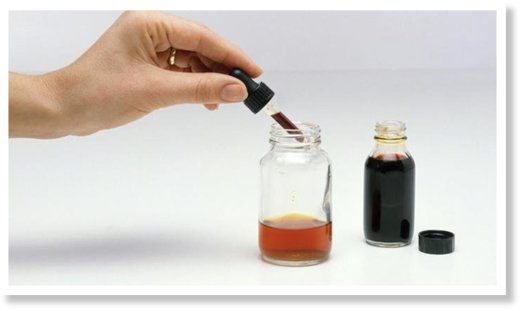
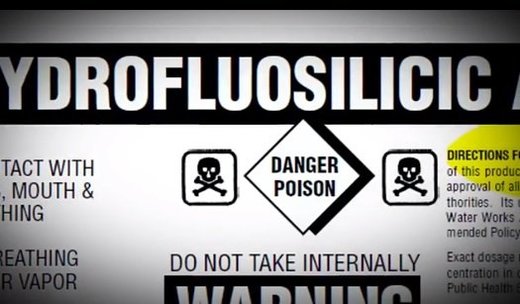
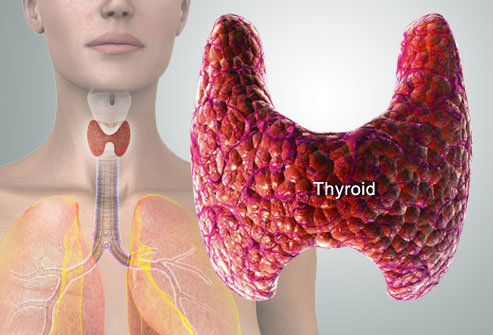
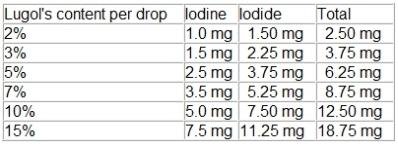



Evolutionary roots of iodine and thyroid hormones in cell–cell signaling
THs regulate and coordinate physiology within and between cells, tissues, and whole organisms, in addition to controlling embryonic growth and development, via dose-dependent regulatory effects on essential genes. While invertebrates and plants do not have thyroid glands, many utilize THs for development, while others store iodine as TH derivatives or TH precursor molecules (iodotyrosines)—or produce similar hormones that act in analogous ways. Such common developmental roles for iodotyrosines across kingdoms suggest that a common endocrine signaling mechanism may account for coordinated evolutionary change in all multi-cellular organisms.
Here, I expand my earlier hypothesis for the role of THs in vertebrate evolution by proposing a critical evolutionary role for iodine, the essential ingredient in all iodotyrosines and THs. Iodine is known to be crucial for life in many unicellular organisms (including evolutionarily ancient cyanobacteria), in part, because it acts as a powerful antioxidant.
I propose that during the last 3–4 billion years, the ease with which various iodine species become volatile, react with simple organic compounds, and catalyze biochemical reactions explains why iodine became an essential constituent of life and the Earth's atmosphere—and a potential marker for the origins of life. From an initial role as membrane antioxidant and biochemical catalyst, spontaneous coupling of iodine with tyrosine appears to have created a versatile, highly reactive and mobile molecule, which over time became integrated into the machinery of energy production, gene function, and DNA replication in mitochondria. Iodotyrosines later coupled together to form THs, the ubiquitous cell-signaling molecules used by all vertebrates.
Thus, due to their evolutionary history, THs, and their derivative and precursors molecules not only became essential for communicating within and between cells, tissues and organs, and for coordinating development and whole-body physiology in vertebrates, but they can also be shared between organisms from different kingdoms.
More here: [Link]